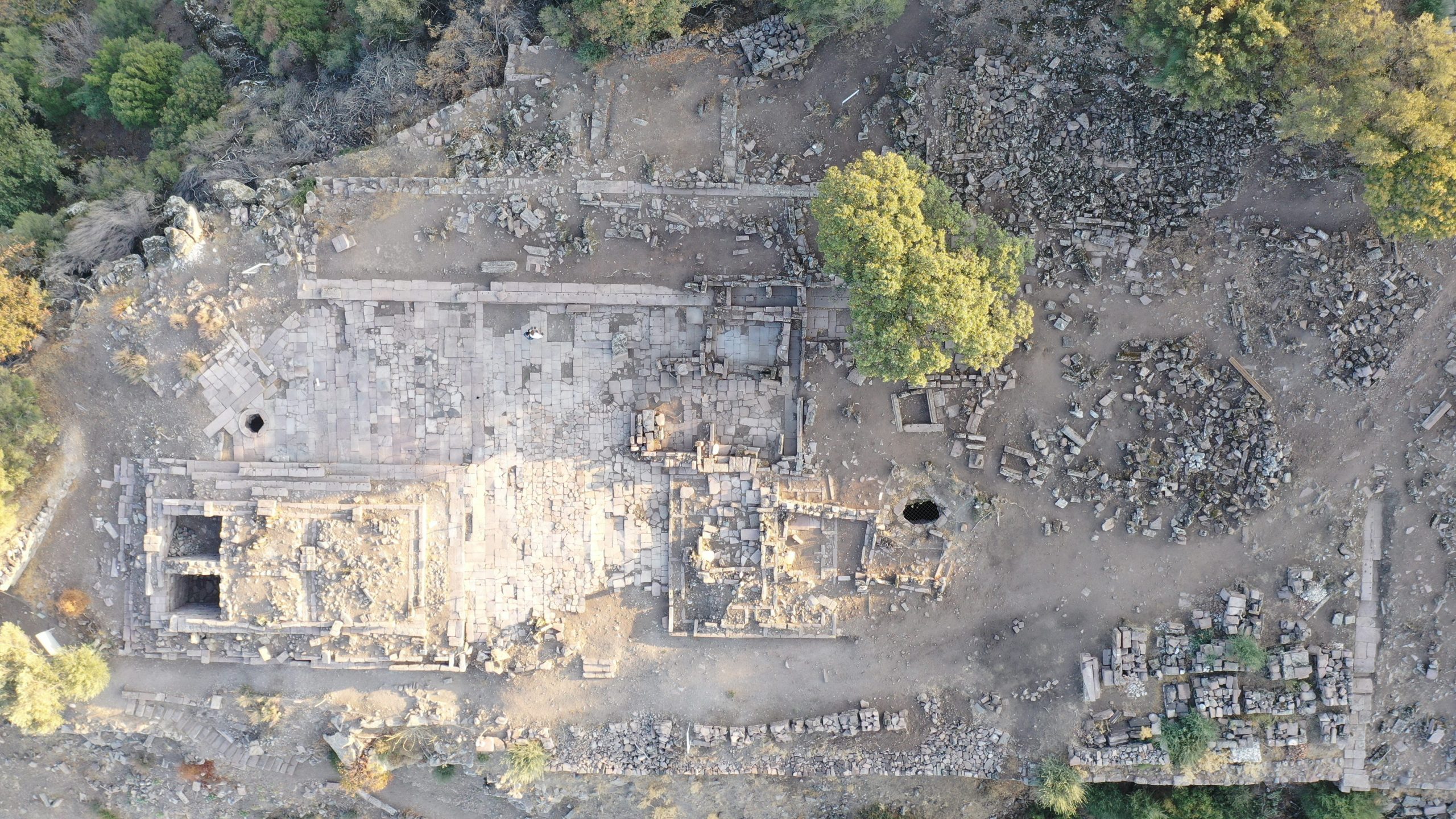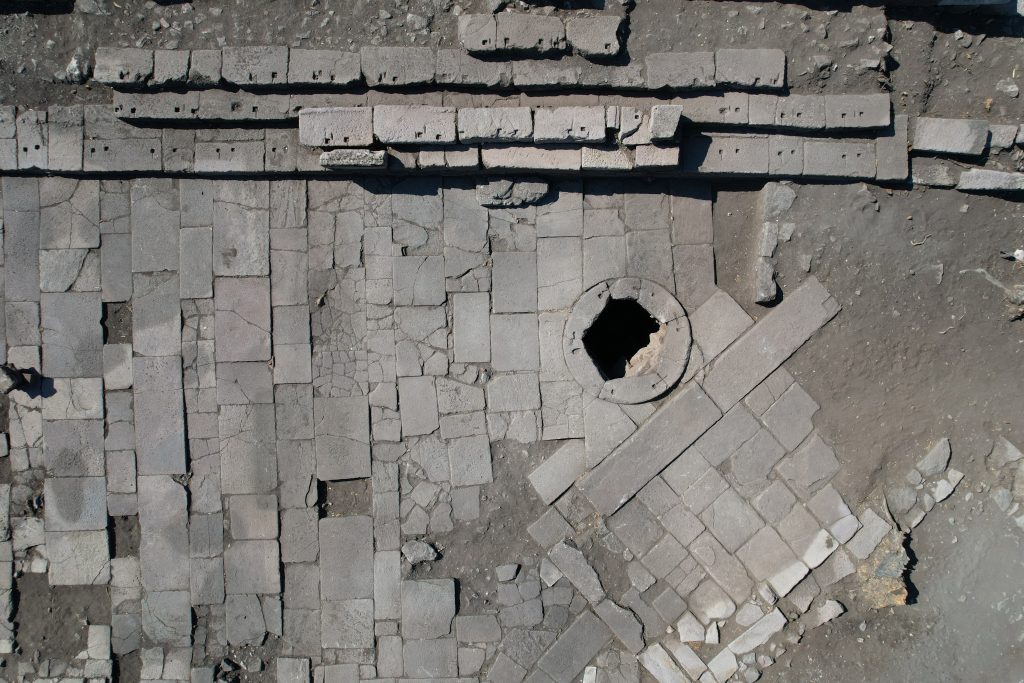The sanctuary oriented on the northwest-southeast axis, is located on the western corner of the acropolis surrounded by Archaic Period wall. The sanctuary shows similar features with the Sanctuary of Athena in Pergamon in terms of its position and planning on the terrace that rises at the east of the theater. During the excavation started in 2017, findings with a wide range of dates from the 7th-6th centuries BCE to the Late Byzantine Period were found.

The Temple of Athena, located at the western end of the sanctuary, stands on a podium oriented on a northwest-southeast axis. The temple has peripteral plan and the number of columns should be 6×10. The entrance of the Doric temple, which is divided into two parts as pronaos and naos, is in the east. The four equal parted-structure of the cella foundation of the temple reminds the grid-planned foundation system of the Zeus Altar of Pergamon. Short walls were placed between the temple foundation wall and the podium walls to support the infrastructure system. Sanctuary of Athena Aigai 65 17 bronze coins, deliberately placed inside the north wall of the pronaos, were found.
The coins, dated to the 2nd century BCE, must have been left as offering, during the rebuilding or repair of the temple. The latest finds from the excavation of the embankment under the naos floor also point to the middle of the 2nd century BCE. An inscription dated around 280 BCE mentions the existence of the Sanctuary of Athena in the city. Pottery from the Archaic Period, which were found extensively during the excavation carried out in the naos of the temple destroyed by illegal excavation, suggest the existence of an early temple, possibly Archaic, under the Hellenistic temple. Some Attic pottery with graffito dated to 5th century BCE and miniature lekythoi painted in red-figure technique in large number found in the foundation filling of naos, must be the offerings associated with the temple.

During the excavations carried out on the southern edge of the temple, terracotta figurines depicting Zeus and Athena were found. Remains of another structure located on 10 m southeast of the Temple of Athena in the sanctuary. It is known that the Zeus cult usually accompanied Athena in the Athena sanctuaries. According to an inscription found in Aigai in 2004, Seleucus I the Nikator and his son Antiochus I the Soter was honored by the Aigaians after the Couroupedion War occurred in 281 BCE. This inscription states that one of the stelae prepared in two copies, should be erected in the Sanctuary of Athena next to the Altar of Zeus. Therefore, it is highly possible that the structure should belong to an altar dedicated to Zeus the Savior. The Altar seems to have a U-shaped plan which is an architectural tradition that has been seen in Anatolia The Temple of Athena, located at the western end of the sanctuary, stands on a podium oriented on a northwestsoutheast axis. The Buildings in Aigai 66 Plan of Sanctuary of Athena Propylon Altar Temple of Athena The sanctuary located on a 40×100 m terrace, is surrounded by an L-planned stoa. Heart shaped corner column drums were found in the debris where 63 m long and 6,50 m wide north stoa joins 30 m long east stoa. Aigai 67 since the Archaic Period. The altar, oriented on the same axis with the temple, has been severely damaged due to the Byzantine building activities on it.

The sanctuary located on a 40×100 m terrace, is surrounded by an L-planned stoa. Heart shaped corner column drums were found in the debris where 63 m long and 6,50 m wide north stoa joins 30 m long east stoa. A row of Ionic columns must have been used in the Doric stoas. Pseudo-isodomic ashlar masonry with orthostatic appearance is similar to Attalos Stoa in Athens in terms of geison and column style. The sanctuary must has taken its final appearance, during the building activities that took place after the Prusias II destruction in 156-154 BCE.
